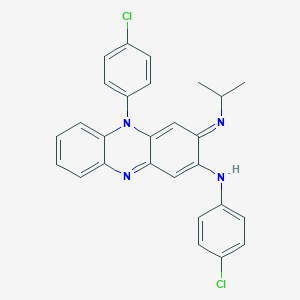Erythema nodosum leprosum (Type 2)
Adult: In combination with baseline antileprosy treatment and corticosteroids (as clinically indicated): 100-200 mg daily for up to 3 months. Gradually taper the dose to 100 mg daily as soon as possible after the reactive episode is controlled.
Oral
Multibacillary leprosy
Adult: Recommended regimen by World Health Organisation (WHO): As a 3-drug regimen: 300 mg clofazimine and 600 mg rifampicin, both given once a month with daily doses of 50 mg clofazimine and 100 mg dapsone. Treatment is given for 12 months. Refer to local treatment guidelines for other dosage regimen recommendations.
Child: 10-14 years Recommended regimen by WHO: As a 3-drug regimen: 150 mg clofazimine with 450 mg rifampicin and 50 mg dapsone once a month, taken with 50 mg dapsone daily and 50 mg clofazimine on alternate days. Treatment is given for 12 months. Refer to local treatment guidelines for other dosage regimen recommendations.
Child: 10-14 years Recommended regimen by WHO: As a 3-drug regimen: 150 mg clofazimine with 450 mg rifampicin and 50 mg dapsone once a month, taken with 50 mg dapsone daily and 50 mg clofazimine on alternate days. Treatment is given for 12 months. Refer to local treatment guidelines for other dosage regimen recommendations.
Oral
Dapsone-resistant leprosy
Adult: 100 mg daily in combination with 1 or more other antileprosy agents for 3 years, then continue as a monotherapy at 100 mg daily.




 Sign Out
Sign Out




